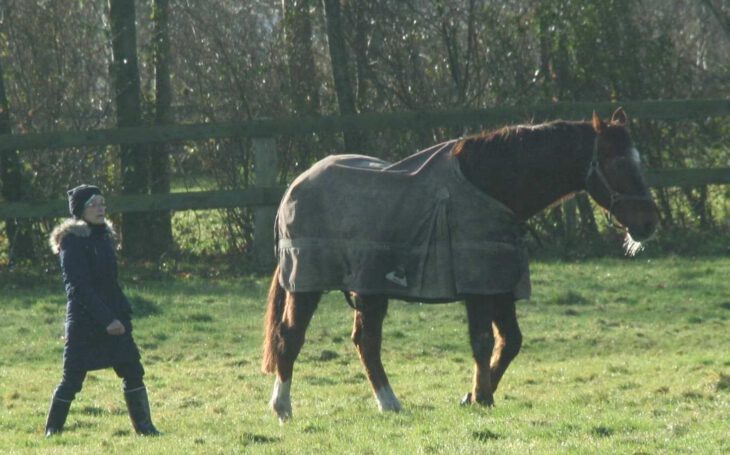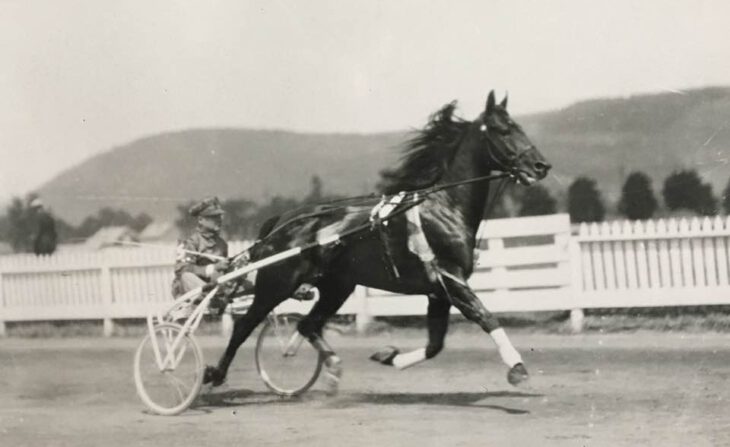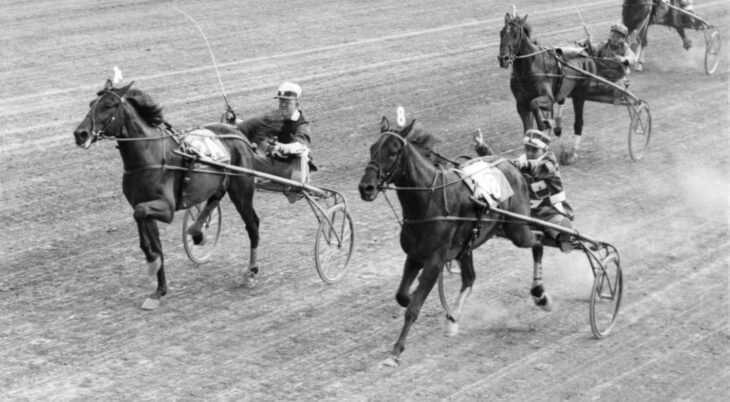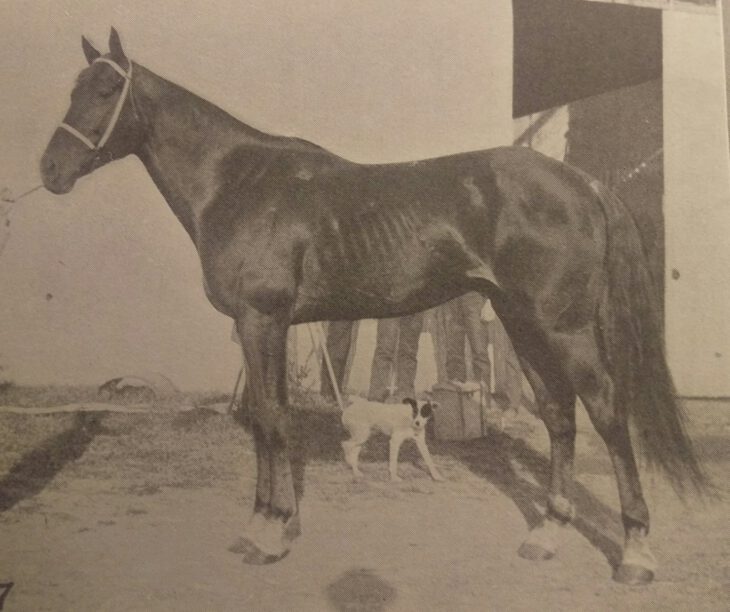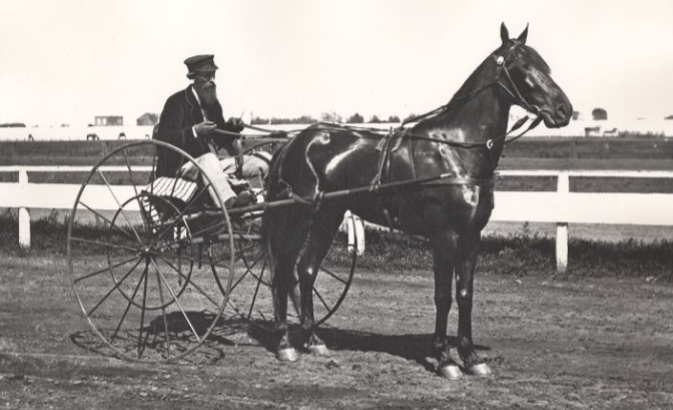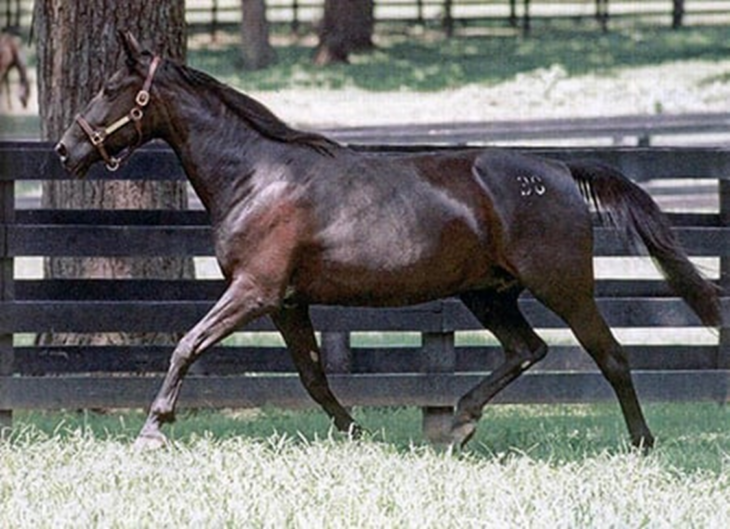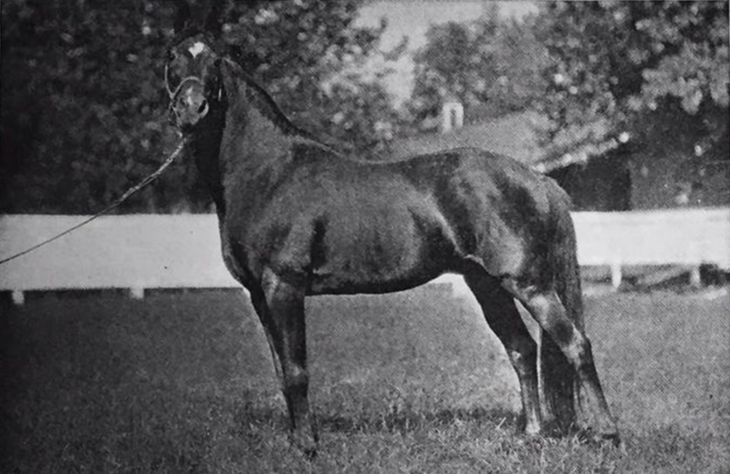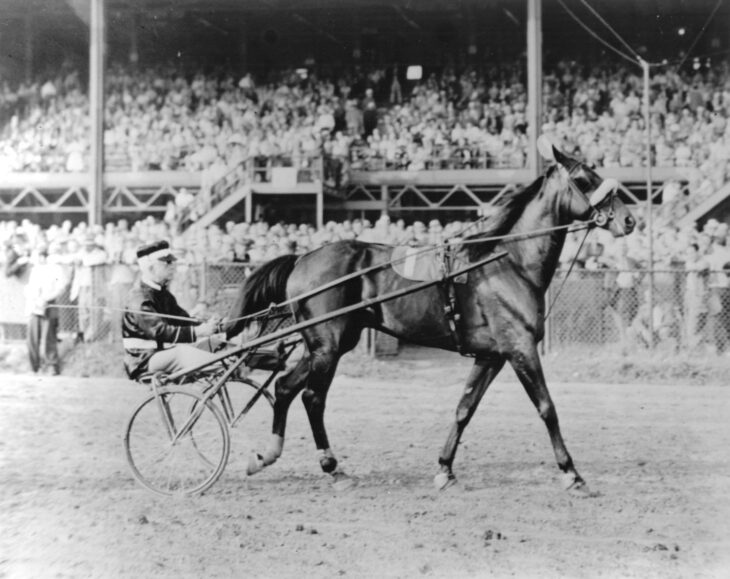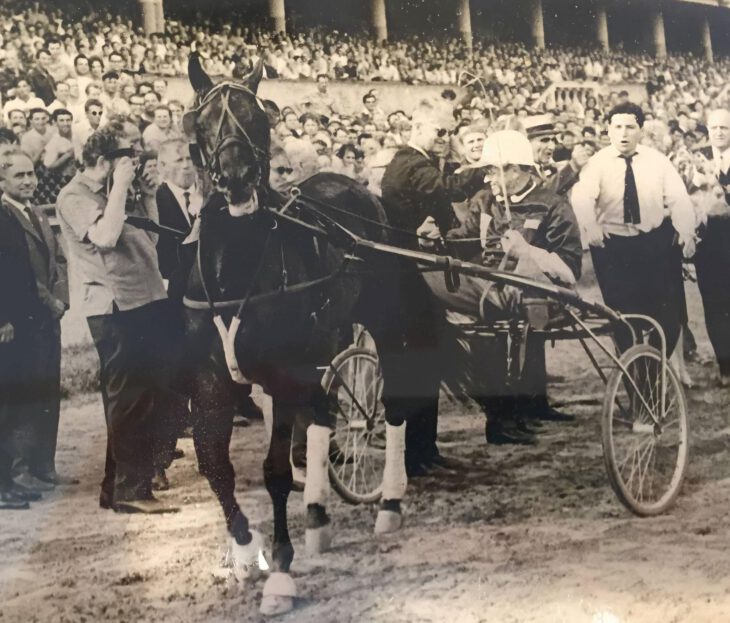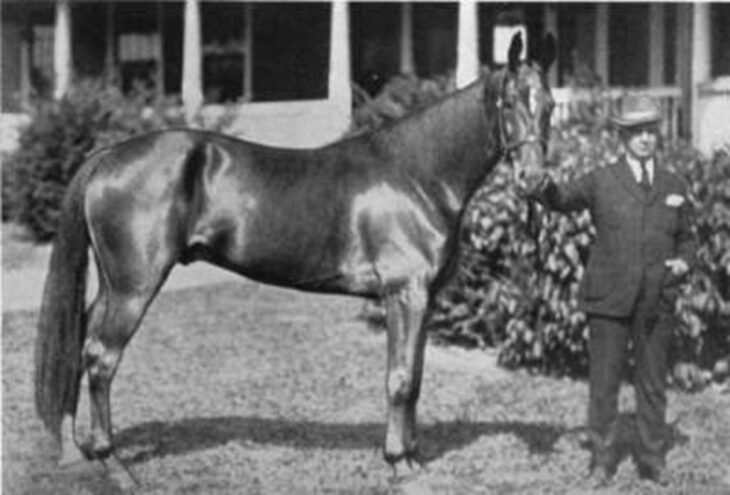He was the undisputed French emperor for several years, and only illness prevented him from winning an unprecedented five Prix d’Amerique-wins in a row. As tough off as on the track, Ourasi was a handful for those around him. He was actually more than a handful for his competitors, who simply couldn’t resist the complete package of strength, speed and an insane will to win. In one race the other competitors even colluded to prevent the chestnut superstar from winning, but Ourasi won anyway.
Read MoreEditor’s pick
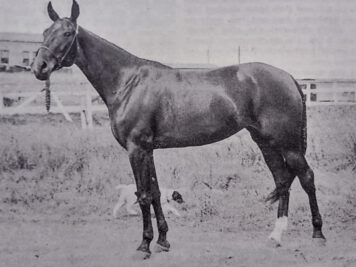
The game superstar who raced herself to death
She was on her way to possibly becoming one of the best trotters in history when tragedy struck. The tale of Sadie Mac is one a...
Read More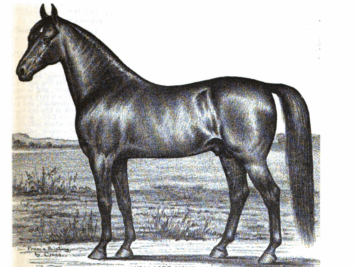
The great horse of San Mateo (and the Captain’s mare)
She was one of the most famous trotters around the time Hambletonian was born, but we don’t even know her name. In the mid...
Read More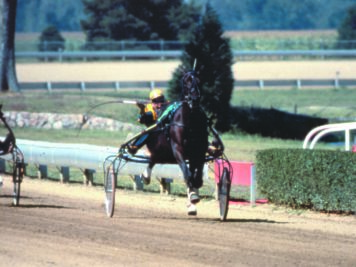
The terror
In the case of Nevele Pride, it is not only the horse that is legendary, but also his temperament. For every great race-related...
Read More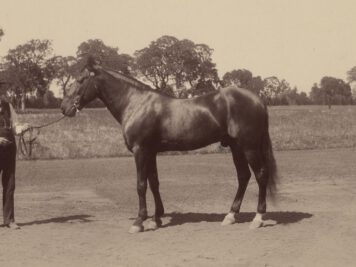
The stallion sensation
He was broken, but never trained for a single race. When Electioneer was bought at 8 for a huge sum he had nothing to show for...
Read More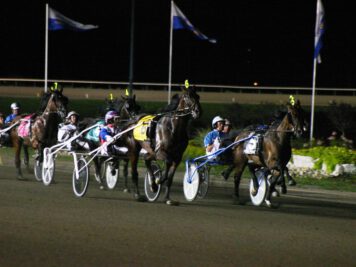
The bargain basement superstar
A $2,000 yearling at the Tattersalls Select Yearling Sale in September 2001, the price tag gave no indications of what was to...
Read More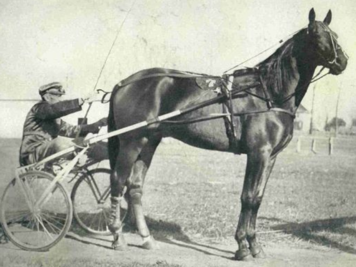
The secret daddy
The expression “Who’s your daddy?” is often used as a claim of dominance. In the case of the 1938 foals of Gäel, a champion...
Read MoreHe may just be the American horse imported to Europe who has left the biggest and most impressive stamp on trotting history. He was dominant on the track and despite relatively few foals left a lasting legacy. There was only one drawback with Sam Williams: he didn’t like the hill at Vincennes. That is a minor thing in the big picture, though, considering his massive influence on European trotting.
Read MoreA very good trotter and world champion, he was initially deemed not good to stand stud at Hanover Shoe Farms and sold to Europe. When his Italian buy failed to pay, Star’s Pride was given a small opportunity at stud at the famed nursey. Despite the lack of confidence and not being given the best mares, the colt immdiately showed himself as a spectacular stallion – maybe the best in history.
Read MoreMaybe the best trotter ever bred in the Hoosier state, Cresceus went from being the best ever seen on the snow in Toledo to the best the world have ever seen. A rather plain trotter with bulldog determinaton, he didn’t take kindly to being mistreated.
Read MoreThe first world champion bred in California, Occident came out nowhere in the early 1870s and tied Goldsmith Maid’s absolute world record in 1873. It was very different to a few years earlier when he was living a life of abuse and ill-treatment. Later he would play a key role in the development of both picture technology but also our understanding of horse gaits.
Read MoreFrom humble beginnings she rose to be one of the best broodmares in history. An ordinary racehorse, as a broodmare Amour Angus defied all expectations and is now considered one of the best in history.
Read MoreStruggling to stay sound, he made just a few starts in his career but impressed mightly both by his capacity and his physique. Guy Axworthy then went on to get revenge at stud by becoming one of the first superstar stallions.
Read MoreWhen Greyhound, by many regarded as the best trotter of all times, retired, his owner, EJ Baker, was looking for other interesting prospects. In 1943 he found The Grey Ghost’s successor when he bought the horse almost everybody thought would break all trotting records. However, less than a year later that horse had passed away. The untimely death of Volo Song has been called one of the greatest tragedies to befall trotting.
Read MoreHe was the tiny American with a heart of gold who became a star in the Soviet Union. The pioneering trio of Apex Hanover, Bill Fleming and Rowland Wade took on the Soviet stars at their home in Moscow in the 60s. After overcoming unfair tactics by the Soviet drivers, the US trio won the hearts and minds of the home crowd. Although little Apex Hanover (150 cms/14,3 hands) won the Arden Downs and George Wilkes Stakes as a 2-year-old in 1961, there was very little to indicate that this $18,000 yearling purchase would later enter the world stage.
Read MoreHe was the world’s first 1:56 trotter and a prized possession of Lawrence Sheppard’s fledging Hanover Shoe Farms. Peter Manning was a natural talent who improved quickly with little work. In fact, the legendary gelding was so good it required a horse of Greyhound’s caliber to beat his world record.
Read More
